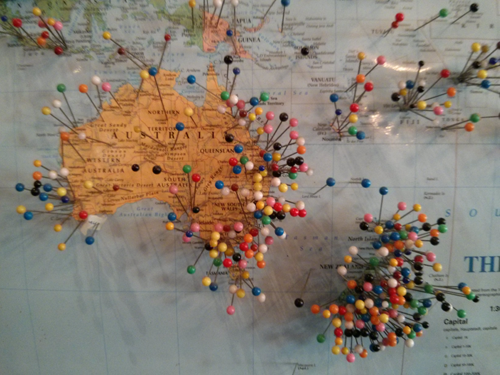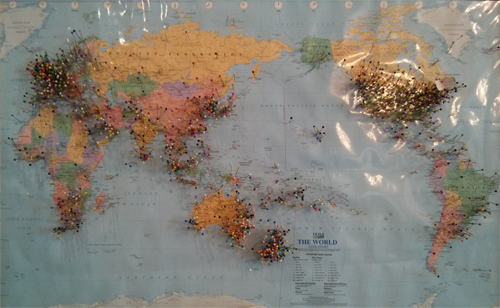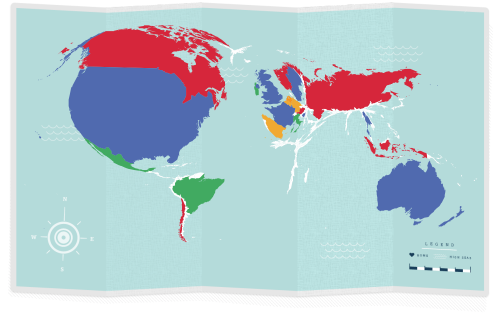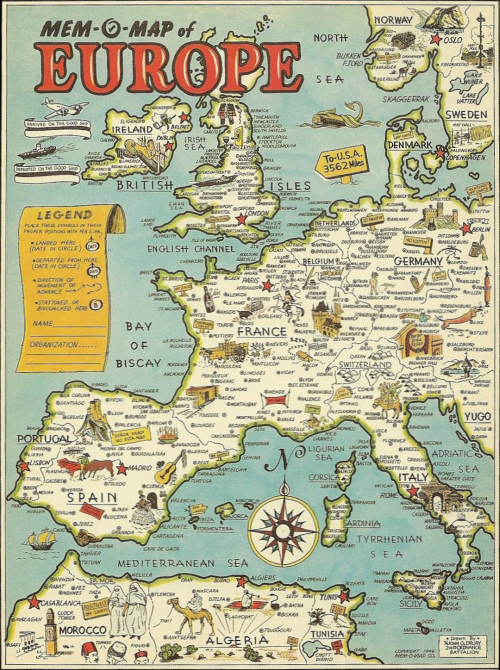This is a somewhat abstract MapCarte entry in the sense that it doesn’t relate to a specific map, in a specific place or by anyone specific. It’s the sort of map you might find all over the world in various places, made by unknown contributors and whose purpose is also undefined. The physical map of the world, placed on a wall, complete with many map pins stuck in them is a wonderful object and a beautiful piece of collective, cumulative and collaborative design.
Usually found in cafes and coffee shops as a way to demonstrate how such a vendor has a worldly reach, the maps go beyond that objective. They are a physical collection of people, represented in space. The fact that each map pin exhibits a colour suggests a classification of type that simply doesn’t exist. On a conventional map such rainbow colours would cause concern but there’s something unquestioned about the random collection of colours that are positioned across the map.
 Of course, the areas with densely positioned pins are inevitably those nearest the vendor but that in itself creates a wonderful pattern as people squeeze their contribution onto the map.
Of course, the areas with densely positioned pins are inevitably those nearest the vendor but that in itself creates a wonderful pattern as people squeeze their contribution onto the map.
Ultimately, these are frivolous maps but which bring delight. We enjoy looking at the maps, each one different yet strangely uniform because they simply show us where people live. In a world of digital cartography it’s pleasing that these personalized renderings still exist. They bring character to many walls and allow us to interact with the map itself, leaving a small mark of where we’ve been to add to those of where everyone is from.



